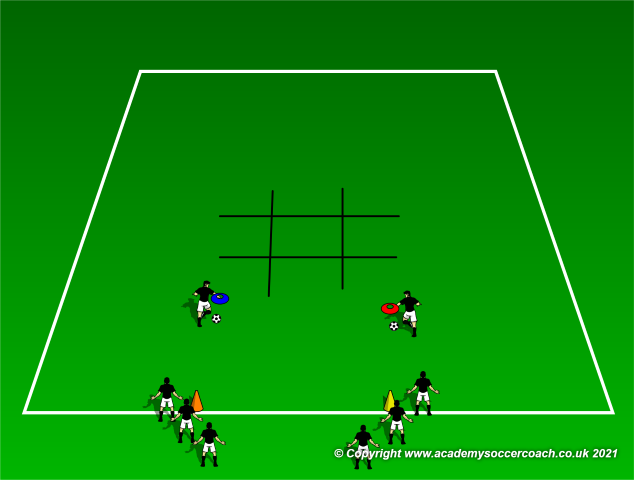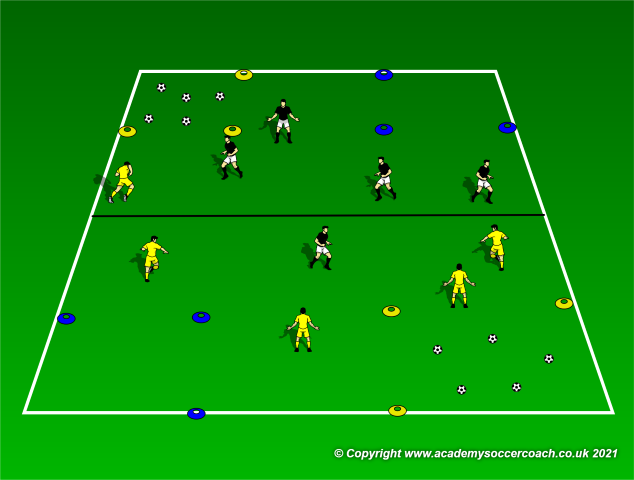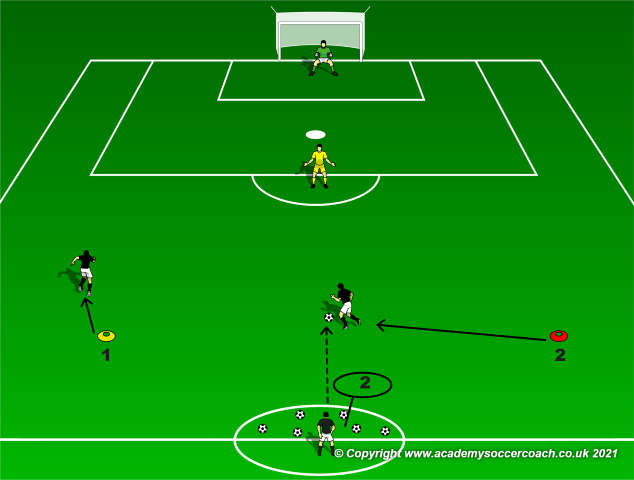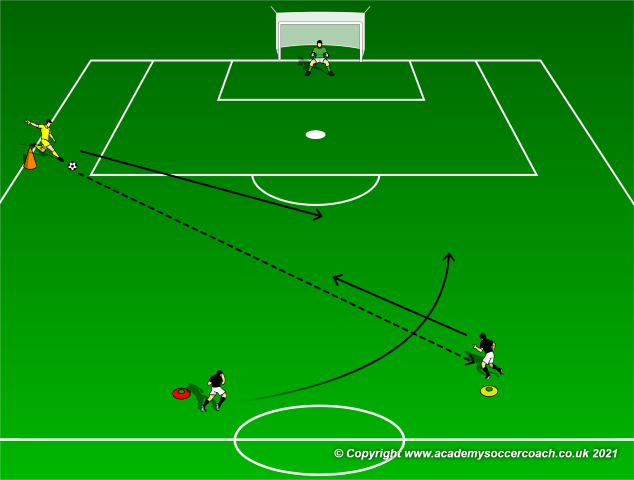By Danny Carvalho
Question - “We play with two forwards, but they keep making the same runs or getting in each other’s way. How can I train them to work off each other and not get in each other’s way?””
Great question demands an even better strategy to sort it out. Let’s think logically and start from the basics.
If they are making the same runs or getting in each other’s way, it’s clear to me that:
- Their communication is insufficient
- Their spatial awareness is poor
- They are not scanning before and during the run
Follow below some strategies I would apply in this case
1st – Bring the problem to a team conversation
Share the problem with them, explain it loud and clear and ask them to come up with solutions. It can be very positively surprising to share thoughts with the team and listen attentively to their ideas. Many heads think better than one!
2nd – Work with activities that demand communication
Example 1: Soccer tic-tac-toe
The old school pen and paper game can be very well used as a great practice warm up. You can set it up with nine hoops or cones to place the pinnies in/on top of it. The goal is to mark three in a row horizontally, vertically or diagonally.
Set up two teams on lines and the 1st player from each team goes at a time. Each team has three pinnies. Players must dribble the ball and take a pinnie with them to place it on one of the nine spots possible. If there is no winner after both teams place all of their three pinnies, the next player to go must grab a pinnie from one spot and place on another until we get a winner.
This game forces players to scan and communicate before acting.

Example 2 – Soccer capture the flag
That’s one of my favorite games ever! So many contents included.
Rules: Two teams, one on each half of the field. At the end corners of each half set up two squares of about 10x10yards. One of the squares is the bank where the flags (balls) are going to be. The 2nd is the prison: when opponents get in your half, you can tag them. The players who get tagged must go into the prison and wait there for someone to save them by just running in there. If this happens, both the “arrested” player and “the savior” get a free pass back into their halves.
The goal here is to run into the opponent’s bank without being tagged on the way. If they succeed, they get a free pass back into their halves dribbling a ball to their bank. The first team to run out of flags loses.
This game encourages players to perform different roles, occupy different spaces of the field and keep on communicating in order to defend their bank and attack the opponents.
A great strategy for attack is to have two players run at a good distance from each other against one defender. And by doing this, they are going to be working on not making the same run or getting on each other’s way.

3rd – Work a lot on 2v1s and 3v2s
Example 1:
Coach with balls in the center circle, two attackers numbered #1 and #2 positioned at about 15-20 yards apart from each other and from the goalie box, one defender in the penalty arc. Coach serves a ball in between the two attackers and shouts out a number. The correspondent attacker runs to get the ball while the other attacker makes a run (encourage them to get creative on the runs and not to stay close to each other).

Progression: add a late defender and a late attacker to make it a breakaway 3v2.
Example 2
On this one we are going to work on “the X move” which consists in the player on the ball runs diagonally while their team mate overlaps them by running behind and around to confuse the defender.
Activity starts with the defender on the sideline near the edge of the goalie box kicking the ball to the furthest attacker and then quickly running in to protect the goal. Both the attackers are going to be at about 20 yards from the goal box and 15 yard apart. As soon as the ball gets to one attacker, the other starts his overlapping run as the player on the ball dribbles diagonally and towards the opponent.

Progression: Have one more defender already positioned in the penalty arc and add another attacker in the middle of the two who were already there.
4th – Set some rules of action and triggers
This one can be simple and easy. Stuff like “When the ball goes on the right flank it’s Ethan’s ball, when the ball goes on the left flank it’s Jack’s ball and when the ball goes down the middle whoever is closest to the ball goes. If there is doubt, leave it to Ethan because he is faster.”
Another one is “If the ball is coming short it’s Jack’s ball because he is better with his back to the goal. If the ball is going long and behind the defender’s backs, it’s Ethan’s because he is faster.”
Figure out their strengths and use it for the team’s benefit.
Summary:
- Have the team participate in a conversation to figure out solutions
- Work on communication, spatial awareness, and scanning
- Work a lot on 2v1s and 3v2s
- Set some rules of action and triggers
By Danny Carvalho, DOC at Corinthians Campinas Youth Club, Brasil


